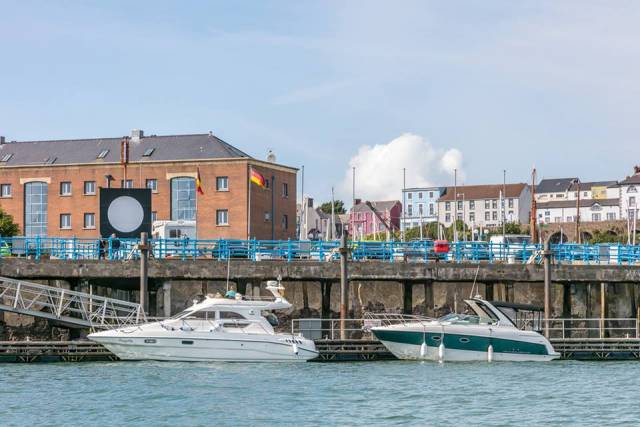#coastalnotes - The Port of Milford Haven, south Wales has completed further improvements to its lock gates at Milford Marina. The works by the port authority have created a more flexible and faster access arrangement for the marina and its dock customers.
The natural waterway of Milford Haven in Pembrokeshire is where the port handles oil and gas and as such is widely recognised in the industry as the energy capital of the UK.
As for the marina, in 2014 an additional set of mitre gates, known as the Samson Gates, were installed at the site which provided quicker and more frequent access, as well as additional support, for the existing gates. In the 2018 programme of maintenance, alterations have been carried out on these gates resulting in a much smoother and more efficient operation.
Marina customers will remember one of the sets of mitre lock gates sustaining damage during the extreme weather conditions during Storm Ophelia. A major recovery system was immediately put in place to ensure minimal disruption to customers, with a temporary drive system installed. Since then, the Port has been working collaboratively with Royal Haskoning and Pressure Design - commissioning them to undertake a detailed study and to design a more modern and robust system.
The upgraded operating system has shortened the lock time to five minutes and enabled the lock gates to operate 24/7 with the tide. Also, both sets of gates now allow pedestrians to cross during most states of the tide; the only time the crossing isn’t available is during ‘freeflow’. This is operated by a traffic light system.
Melanie Durney, Marina and Docks Manager, commented: “We recognise the impact that this had on our customers, and are grateful for their patience. The damage we sustained from Storm Ophelia was unforeseen, but we have used this event to undertake further improvement works. We are proud to be able to offer a more flexible and extended locking programme, and improve the experience for our marina and dock customers.”
































































